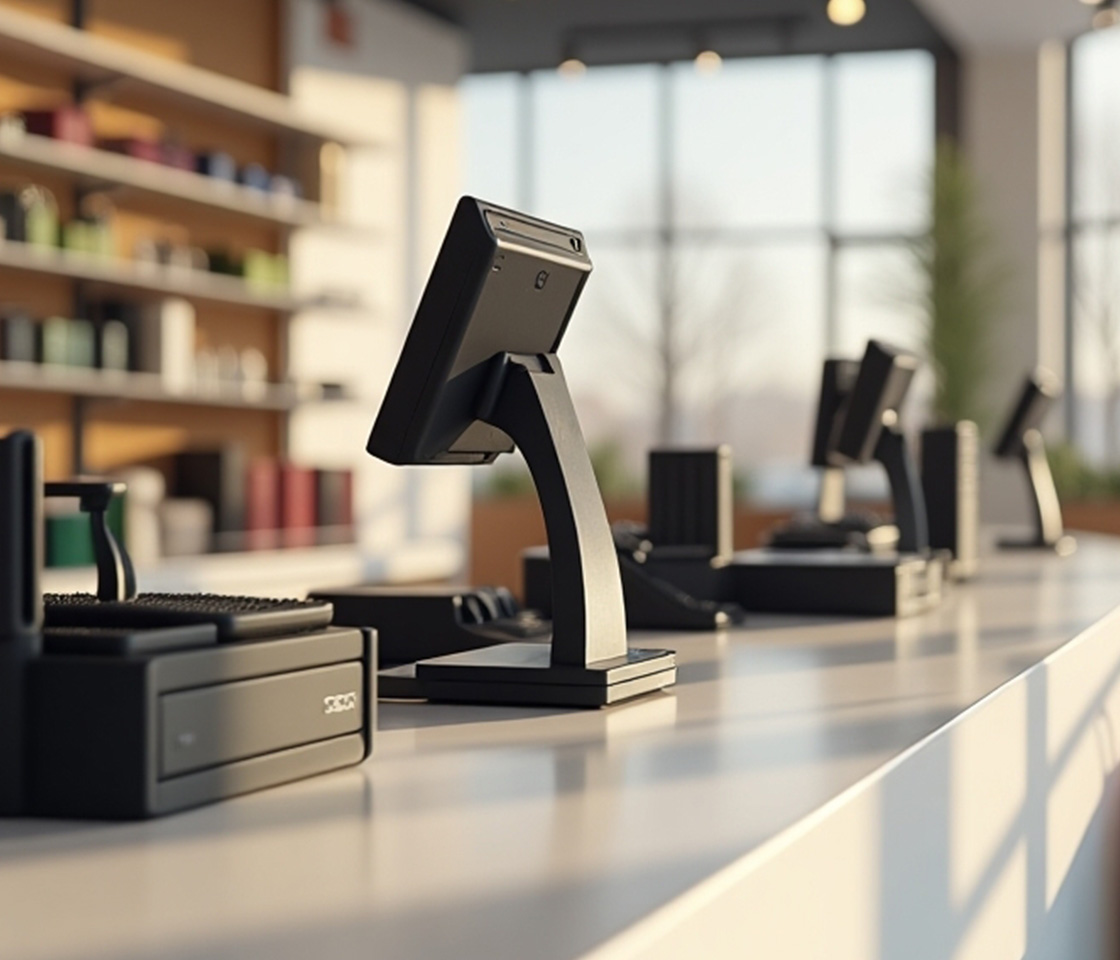If checkout counters help with traffic flow, brand perception, and impulse buys, why are some retailers removing them?
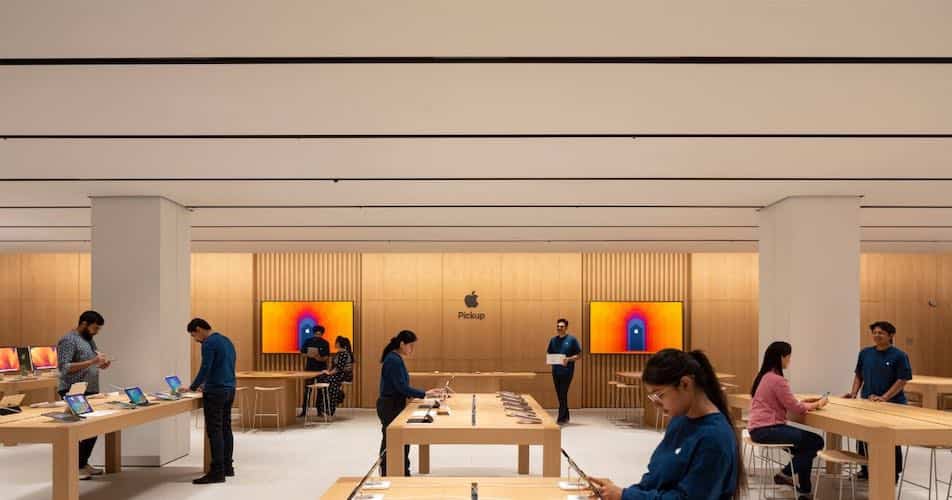
Are checkout counters dead?
If you walk into an Apple or Mejuri store, or shop at U.S. retailers like Velvet or Glossier, you’d think the checkout counter is a thing of the past.
Increasingly, premium brands are redefining their shopping experience by eliminating checkout counters, replacing them with a swarm of sales reps strolling around with handheld POS tablets. Customers now complete their purchases anywhere in the store, no counter, no queue, no real direction on what to do next. It’s a minimalist approach that can often confuse shoppers who are accustomed to anchoring the checkout process.
Of course, for high-volume retailers, this approach would create chaos. The “no checkout counter” model just doesn’t hold up.
For retailers in grocery, home goods, convenience, and hardware, checkout counters remain the backbone of the store. They manage customer flow and drive sales in ways roaming checkout experiences can’t replicate.
In this article, we’ll look at five data-backed reasons why the checkout counter isn’t going anywhere, and how it’s evolving to meet the needs of modern retail.
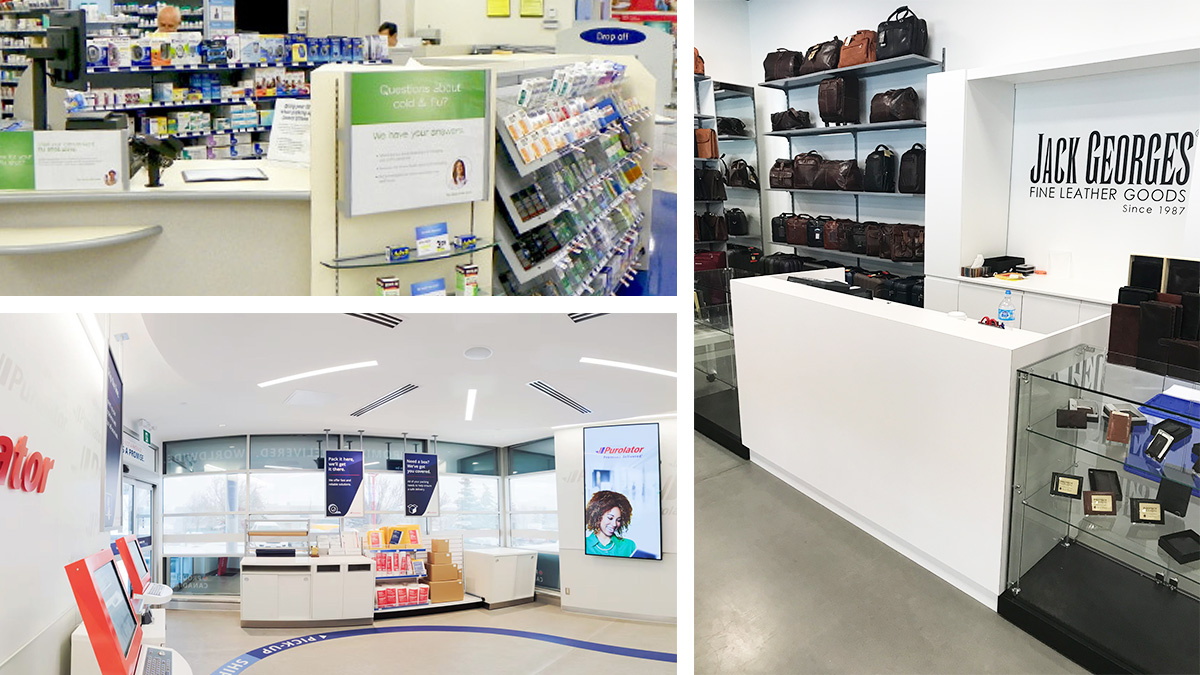 #1: Checkout Counters Anchor Store Flow and Guide Customer Movement
#1: Checkout Counters Anchor Store Flow and Guide Customer Movement
Retailers know that a store’s layout has a huge impact on customer behaviour. That’s why checkout counters are so much more than a place to pay.
Think about IKEA’s maze approach: every turn is designed to move shoppers forward so they never backtrack, always see something new, and feel compelled to grab that “one last thing.”
Checkout counters work the same way. They give shoppers a sense of direction and serve as the natural endpoint of the in-store journey.
Remove that final anchor and everything starts to feel…off.
Traffic flow becomes unpredictable, shoppers hesitate, and at high-volume times, queues turn into a chaotic mob.
A defined checkout zone brings order to the madness. And research published in International Review of Management and Marketing shows that clear circulation paths and visual anchors guide movement, reduce perceived congestion, and enhance the shopping experience.
Dig Deeper: Different store layouts use checkout counters in specific ways.
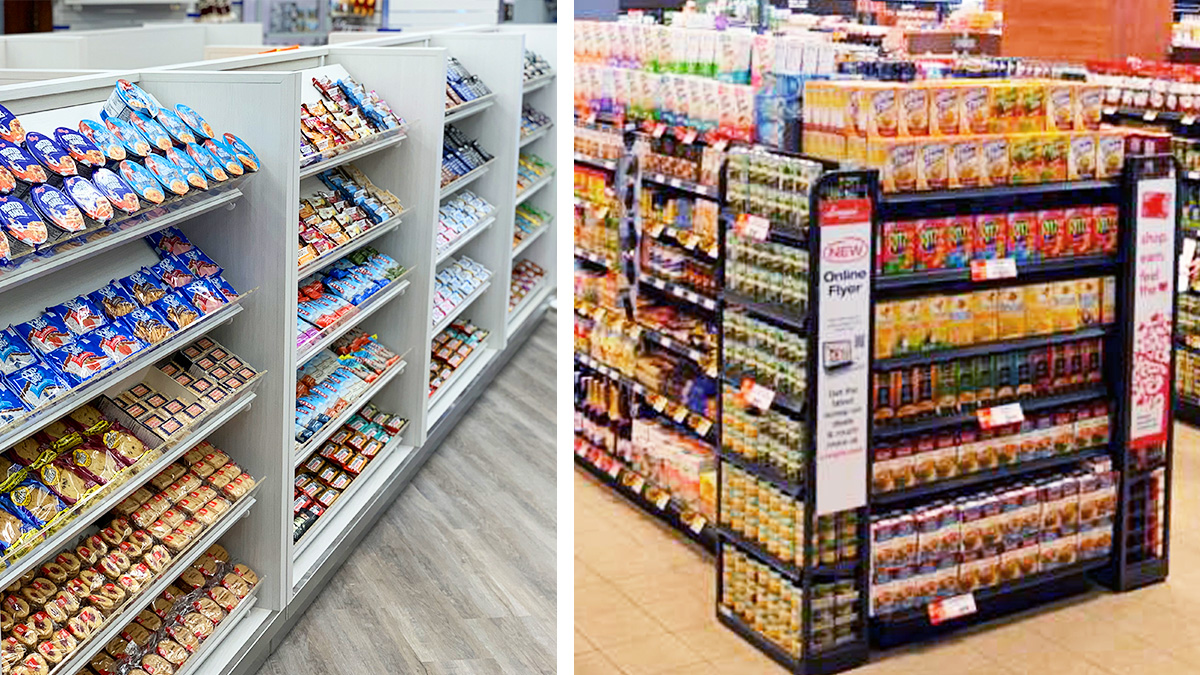 #2: Checkout Counters Drive Impulse Buys
#2: Checkout Counters Drive Impulse Buys
The checkout zone (especially for Grocery and C-store) is one of the most profitable areas in any store. Small, high-margin products are strategically placed where shoppers wait to pay. It’s not a coincidence. It just works.
Built-in shelving, clear sightlines, and bright lighting make those add-on items easy to spot without clutter. Rotating small collections or short-term offers keeps the space feeling fresh and familiar.
And since most shoppers still prefer to buy in-store, the checkout counter is the perfect spot to capture attention and spark impulse buys.
Clearly, a well-designed checkout counter turns waiting time into buying time, and here are 4 more ways checkout counters can impact sales and operations:
- Include tiered and vertical shelving to keep products at eye level and drive visibility
- Keep counters uncluttered and allow space for staff movement, bagging, and payment
- Integrate POS systems, lighting, and electronics cleanly to hide cables and tech where possible
- Design counters to be ergonomic and accessible, with clear space for mobility devices and comfortable interaction zones
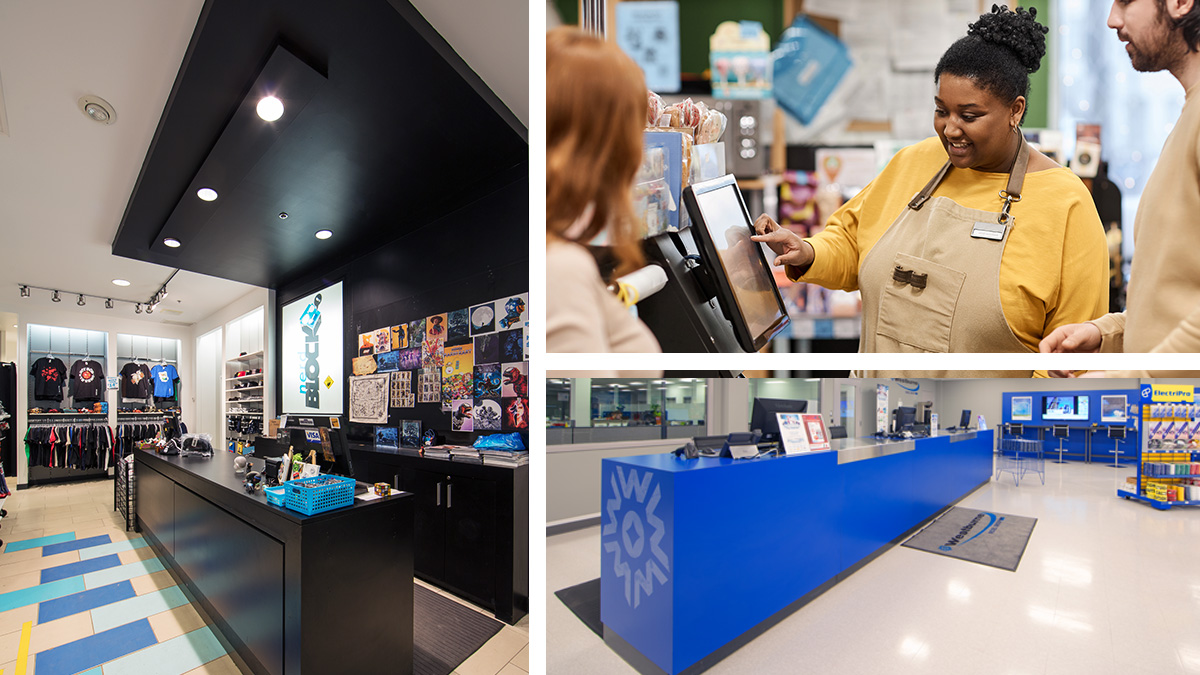 #3: People Still Matter
#3: People Still Matter
Automation can make transactions faster, but it can’t replace people.
Even in stores with self-checkouts, customers still look for assistance when they’re uncertain or confused. There’s the old saying, “confused people don’t buy.” According to a Drexel University study, many shoppers report feeling frustrated or “abandoned” by fully automated systems (meaning they’re not exactly in the mood to buy).
A well-placed, well-designed, and well-built checkout counter, with clear layouts, intuitive workflows, and ergonomic features, helps make interactions more friendly, natural, and straightforward. It gives your customers a clear destination for help, and also gives your staff a home base to work from.
Why design matters:
- Counters create a clear destination for assistance, reducing confusion for shoppers and staff
- Streamlined layouts and clear pathways keep lines moving, even at peak hours
- Ergonomic designs improve comfort and efficiency for both employees and customers
- Good sightlines let staff spot when someone needs help before frustration sets in
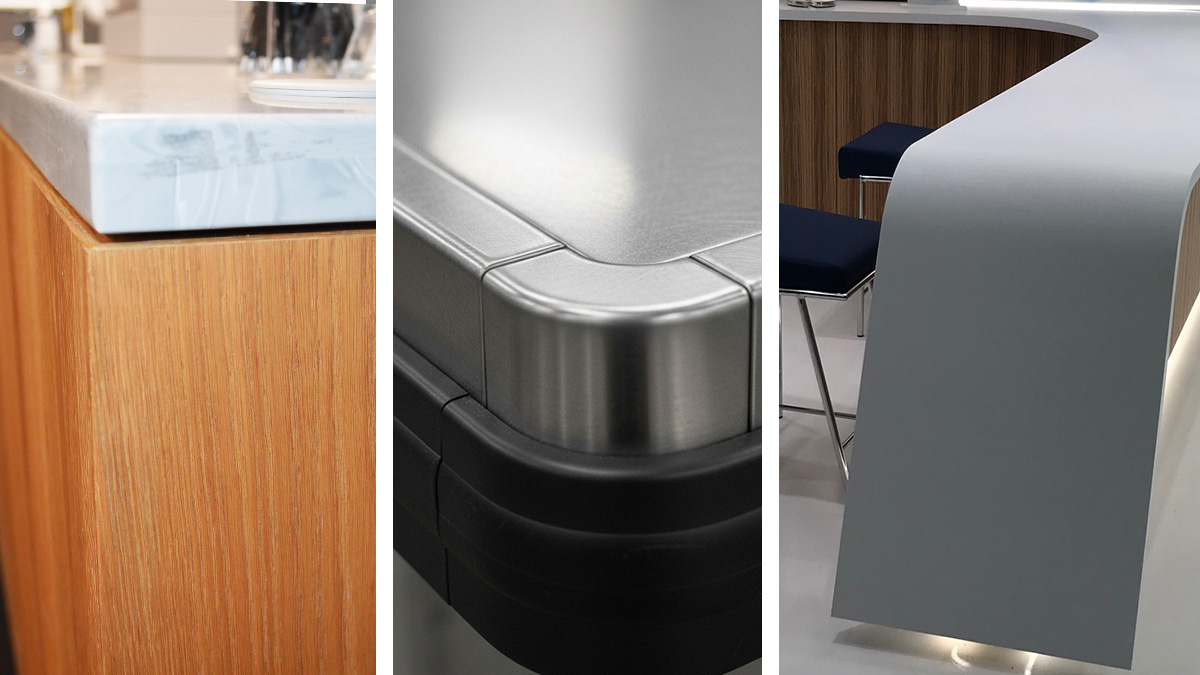 #4: Checkout Design Shapes Brand Perception
#4: Checkout Design Shapes Brand Perception
A well-designed counter does more than process payments. It reflects your brand’s standards and the value you place on the customer experience.
Think about it this way:
- High-quality materials signal reliability. Durable surfaces like laminate, metal, and solid finishes look professional and communicate quality.
- Integrated lighting enhances visibility and design. Built-in lighting or simple “open” indicators draw attention to the counter and improve visibility for transactions. Small details that make the checkout process feel more polished and intentional.
- An organized counter reflects how your brand operates. A clean, well-structured checkout makes transactions faster, reduces clutter, and keeps the space easy to manage.
Dig Deeper: Learn how durable, well-built fixtures shape brand perception in C-store environments.
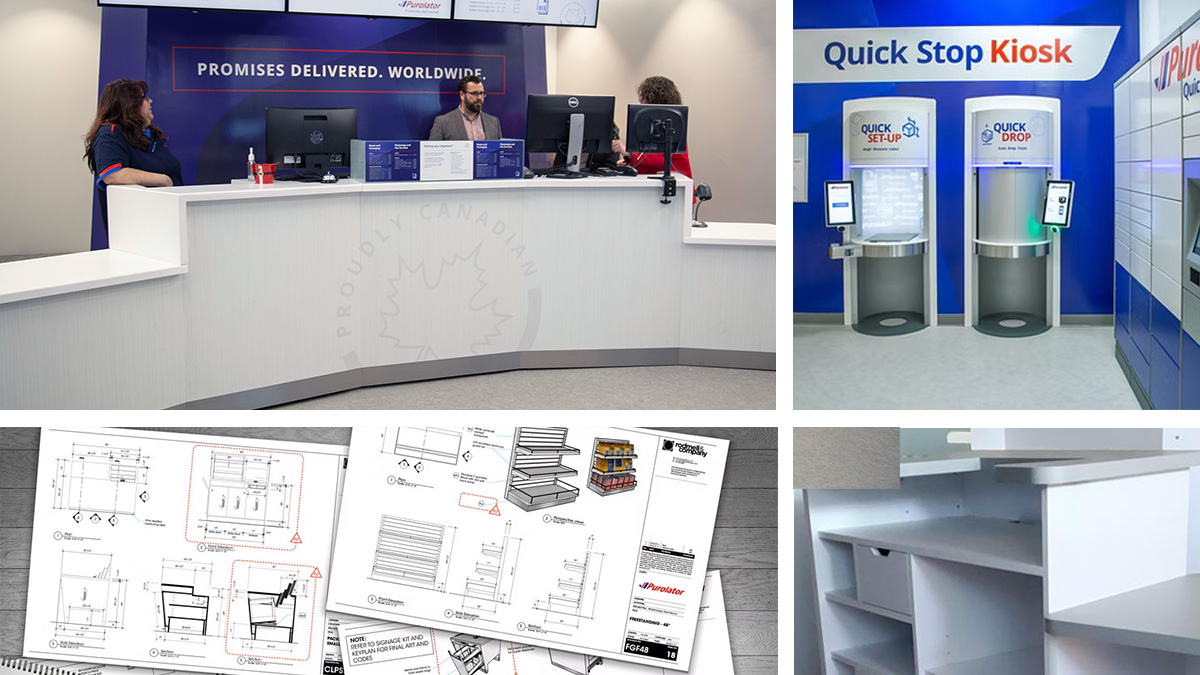 #5: Modular Checkout Counters Are Better for Business
#5: Modular Checkout Counters Are Better for Business
The checkout counter isn’t dying, but it is evolving.
Retailers know that no two stores are alike. Different footprints, traffic volumes, and customer needs make a single counter design impractical when rolling out a program to multiple stores. That’s where modular checkout systems come in. They enable retailers to create consistent, high-performing checkout zones that still accommodate each store’s unique layout.
A well-built modular counter brings flexibility, speed, and consistency to store programs. It shortens rollout times, simplifies maintenance, and scales easily across multiple locations. It’s a smarter, more efficient way to design for growth.
Here’s how modern modular counter programs make that possible:
- They simplify national rollouts. CBSF’s work with Purolator shows how 25 standardized modules can be combined into 18 different configurations, giving every store a counter tailored to its footprint and traffic patterns without starting from scratch each time.
- They fit the store environment. High-volume locations can choose solid surface countertops for durability, while smaller sites can opt for cost-effective laminate finishes. Each location gets the performance it needs within its budget.
- They keep branding consistent. Standardized modules maintain the same materials, finishes, and proportions across every site. The result is a unified brand experience and a smoother installation process.
Dig Deeper: See how a modular checkout system scales across 20 locations in the Purolator case study.
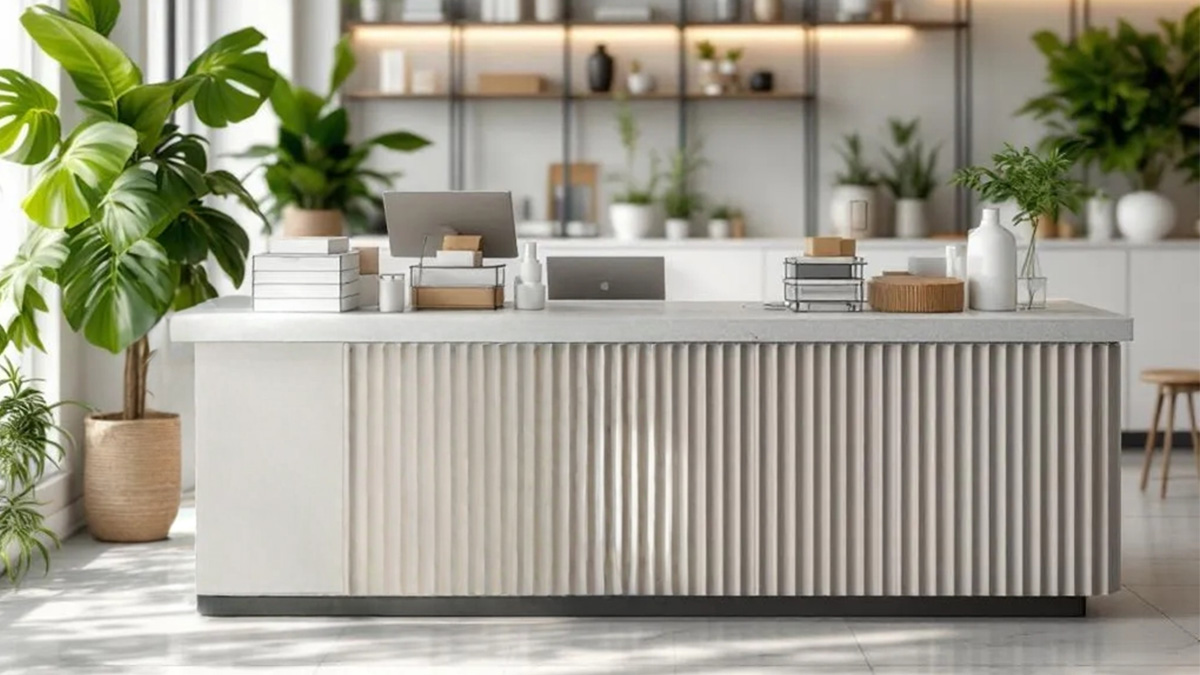 The Bottom Line
The Bottom Line
For most retailers, checkout counters are a cornerstone of their layout. They give customers a clear place to complete their visit, help staff stay organized, and keep the store running efficiently.
Rather than disrupting the checkout process, we believe in building smarter checkouts. A well-designed counter still does what it’s always done; it guides customers through the space and reinforces trust in the brand.
If you’re rethinking your checkout or planning a new store design, connect with our retail fixture manufacturing team. We’ll help you create the perfect checkout counter for your space.
Want more retail design insights? Join 400+ retail professionals who read our email newsletter full of practical advice and design ideas. https://mailchi.mp/8a889d2ab116/v

